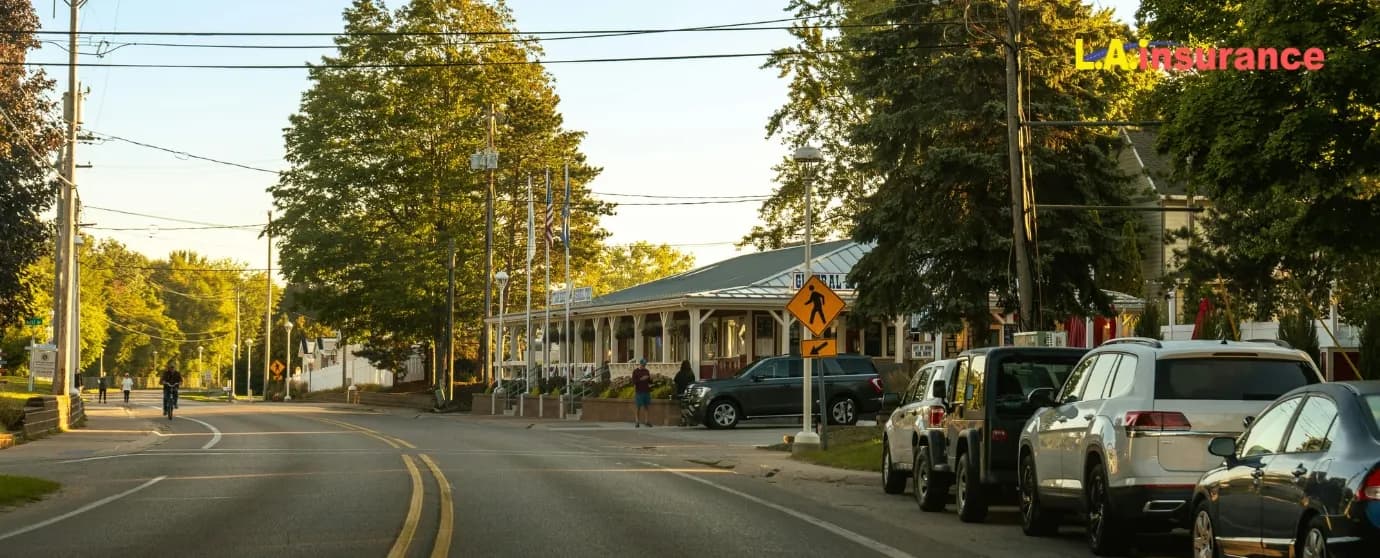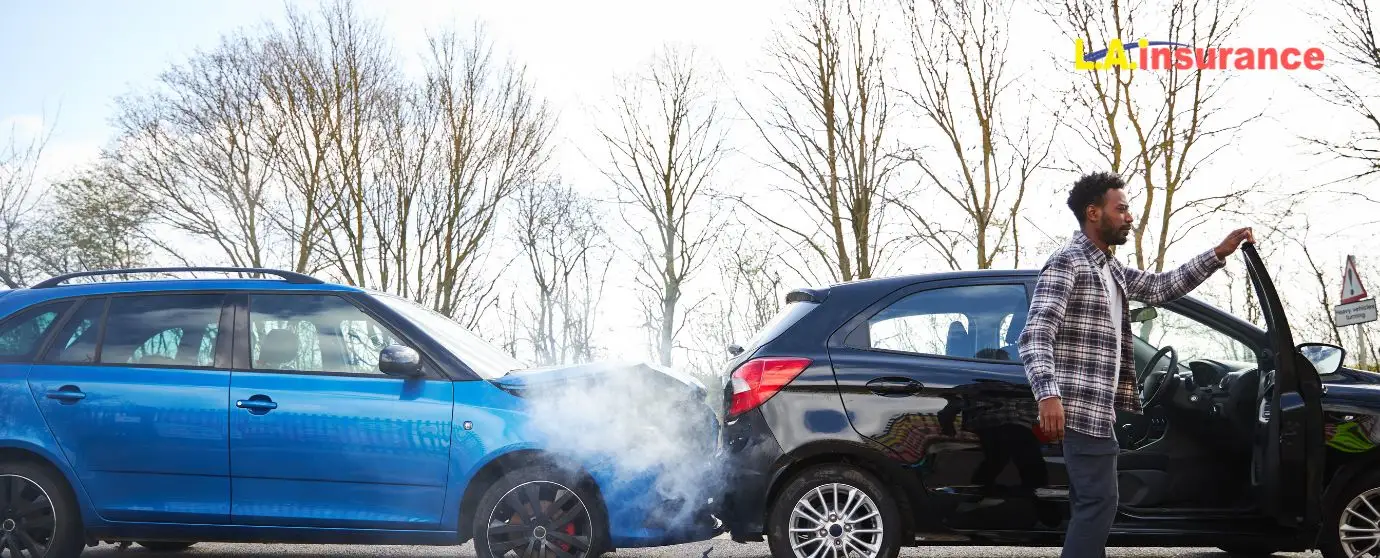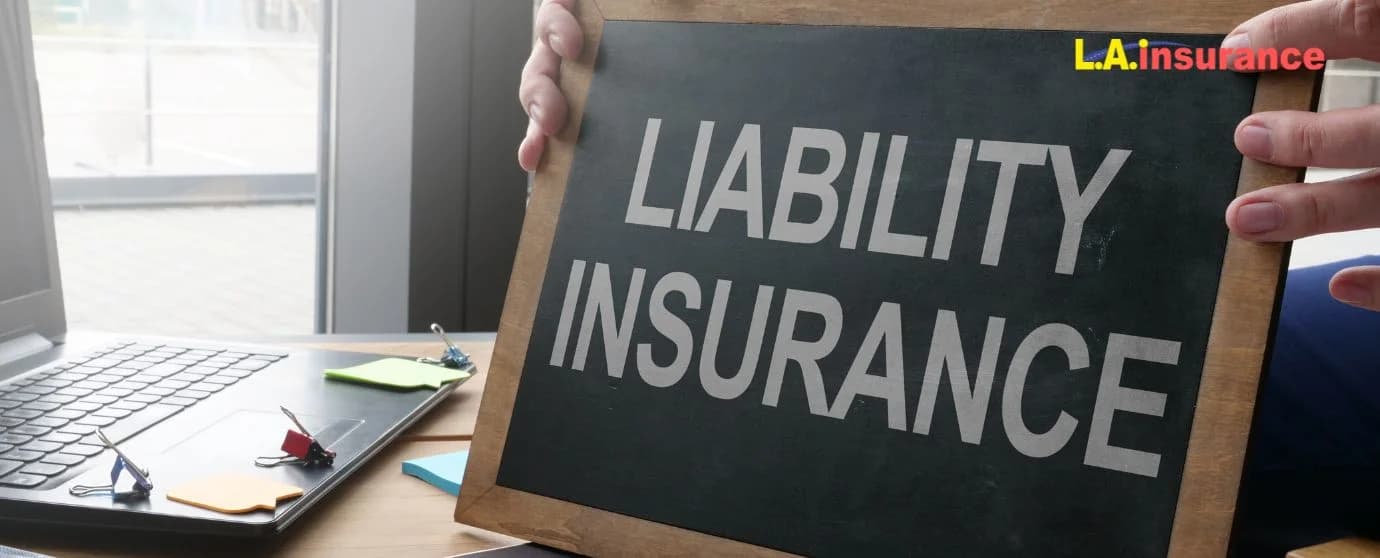
Publish Date: 05-02-2025
Auto Insurance
Last Updated: 17-12-2025
How Does Your Location Affect Car Insurance Rates?
Did you know that residents in Brooklyn, New York face the highest car insurance rates in the U.S.A.? They pay roughly $6,841 annually for full coverage auto insurance, around 75% higher than the state average. Meanwhile, Penfield, New York, offers rates as low as $1,713 per year. Additionally, drivers in Hamtramck, MI, and Palm Beach, FL, pay some of the highest car insurance rates. But why such a big difference? The answer lies in your location. So, how does where you live affect car insurance rates?
Insurance companies always assess risk based on your zip code! They calculate your premiums based on factors like crime rates, traffic density, population density, weather risks, repair costs, and more. If you live in a high-risk area, expect to pay more. Keep reading this article to learn more about location-based factors affecting your auto insurance rates, car insurance rates by city, the most and least expensive cities, and how you can get affordable coverage, even in high-risk areas.
How Does Your Location Affect Car Insurance Rates?
Where you live has a direct impact on how much you pay for car insurance. In fact, location is one of the vital factors when it comes to setting your insurance premiums. Insurers analyze data specific to your ZIP code to assess risks like accident rates, theft frequency, and repair costs. Urban areas with heavy traffic and higher crime rates typically have more expensive premiums than rural regions with fewer vehicles and accidents. Drivers in large cities often face rates that are 50% higher than their rural counterparts.
Insurers justify their approach by using statistical models to predict how likely claims are to happen. If a city or region experiences frequent property damage or weather-related claims, premiums rise to cover potential losses. Similarly, states with higher minimum coverage requirements or inflated repair costs— like Florida, Michigan, or California consistently report some of the nation’s highest rates. Conversely, Maine and Vermont offer lower averages due to less congestion and fewer claims.
Here are the factors Affecting Location-Based Rates:
- Population Density
- Accident and Theft Frequency
- Auto Repair and Medical Costs
- Local Coverage Mandates
- Road Conditions
- Weather Risks
Population Density
The number of people living in an area affects accident risks. Highly populated cities are most likely to have more traffic congestion, higher crime rates (e.g., auto theft, vandalism), higher accident rates, and more claim frequency. All these lead to higher insurance premiums.
Accident and Theft Frequency
Insurance companies track the number of claims filed in each area. If a city reports frequent accidents or high car theft rates, insurers classify it as a high-risk location. For instance: places with heavy traffic congestion experience more rear-end collisions. Similarly, areas with high vandalism and car theft drive up insurance costs. According to Statista, California and Texas had the highest number of motor vehicle thefts (2023). When it comes to cities, Pueblo, CO, Bakersfield, CA, and Denver-Aurora-Lakewood, CO experiences the highest number of auto thefts as per the Insurance Information Institute (III) report. The notable number of thefts is likely to increase comprehensive insurance coverage rates in these areas, as insurance companies cover vehicle theft under this policy.
Auto Repair and Medical Costs
Living in a city with expensive healthcare and auto repair services can increase your insurance premium. As you’re aware after an accident, insurance providers cover medical bills and car repairs, so areas with high labor and material costs tend to have pricier coverage. Cities that have high living costs are also likely to have the most expensive auto insurance rates.
Local Coverage Mandates
Each state has its own insurance laws. Some states require additional coverage, such as uninsured motorist protection or personal injury protection (PIP). No-fault states like Michigan or Florida (e.g., Michigan auto insurance requirements), where insurance covers medical expenses regardless of who caused the accident, often have higher insurance rates. The type of car insurance coverage you choose increases your rates.
Road Conditions
Poorly maintained roads can increase the chances of accidents and vehicle damage. Cities with potholes, unclear road signs, and confusing traffic patterns experience more collisions or crashes. In high-traffic urban areas, roads wear down quickly which contributes to higher accident risks and, in turn, higher insurance rates. On the other hand, well-maintained highways and streets can help keep premiums low.
Weather Risks
If you’re living in a city highly prone to weather damages, there’s a high chance of facing expensive car insurance rates. Extreme weather conditions such as hurricanes, snowstorms, and flooding increase insurance costs. If you live in a coastal city prone to hurricanes (e.g., Tampa, Florida, New Orleans, Louisiana), your premiums will be higher due to the higher chance of storm damage. Similarly, places with severe winter weather may have higher accident rates due to icy roads. According to the U.S. Department of Transportation, there are over 5,891,000 vehicle crashes annually in the United States. Of these, around 21% or nearly 1,235,000 crashes are weather-related. That is why insurance companies adjust their prices based on the climate risks of each region.
Car Insurance Rates by Location: Most and Least Expensive Cities Per State in 2025
State | Most Expensive City | Most Expensive City's Average Annual Full Coverage Premium | Each State's Annual Average Full Coverage Rate | Comparison with State Average (%) | Cheapest City | Cheapest City's Average Annual Full Coverage Premium | Comparison with State Average (%) |
Alabama | Morvin | $2,341 | $2,038 | +14.88% | Ozark | $1,856 | -8.92% |
Alaska | Anchorage | $2,548 | $2,387 | +6.74% | Sitka | $1,833 | -23.22% |
Arizona | Phoenix | $3,222 | $2,744 | +17.43% | Littlefield | $2,065 | -24.74% |
Arkansas | Crumrod | $2,913 | $2,473 | +17.78% | Bella Vista | $2,224 | -10.08% |
California | Beverly Hills | $4,633 | $2,973 | +55.84% | Los Osos | $2,195 | -26.17% |
Colorado | Fort Lyon | $3,975 | $3,144 | +26.44% | Fruita | $2,290 | -27.11% |
Connecticut | Hartford | $3,669 | $2,720 | +34.87% | Groton | $2,253 | -17.15% |
Delaware | New Castle | $3,219 | $2,771 | +16.18% | Ocean View | $2,228 | -19.60% |
Florida | Palm Beach | $5,889 | $4,171 | +41.18% | Santa Rosa Beach | $2,871 | -31.17% |
Georgia | Lithonia | $3,928 | $2,939 | +33.63% | Lake Park | $2,234 | -24.01% |
Hawaii | Papaaloa | $1,780 | $1,689 | +5.38% | Hanalei | $1,468 | -13.09% |
Idaho | Moyie Springs | $1,642 | $1,454 | +12.93% | Boise | $1,338 | -7.98% |
Illinois | Dolton | $3,223 | $2,315 | +39.15% | Normal | $1,707 | -26.28% |
Indiana | Gary | $2,710 | $1,723 | +57.28% | Decatur | $1,507 | -12.55% |
Iowa | Bedford | $2,303 | $1,857 | +24.00% | Coralville | $1,602 | -13.74% |
Kansas | Coolidge | $3,084 | $2,518 | +22.46% | Edgerton | $2,239 | -11.07% |
Kentucky | Inez | $4,005 | $2,747 | +45.83% | Fort Thomas | $2,098 | -23.61% |
Louisiana | New Orleans | $5,693 | $3,978 | +43.14% | Ruston | $2,986 | -24.94% |
Maine | Oquossoc | $1,838 | $1,627 | +13.00% | Cape Elizabeth | $1,507 | -7.38% |
Maryland | Gwynn Oak | $4,081 | $2,793 | +46.11% | Hagerstown | $2,094 | -25.05% |
Massachusetts | Roxbury | $3,667 | $2,092 | +75.30% | Rowe | $1,408 | -32.68% |
Michigan | Hamtramck | $5,759 | $3,131 | +83.93% | Saint Joseph | $2,306 | -26.34% |
Minnesota | Pennington | $2,850 | $2,528 | +12.73% | Mankato | $2,165 | -14.35% |
Mississippi | Hermanville | $2,576 | $2,149 | +19.85% | Starkville | $1,905 | -11.35% |
Missouri | Saint Louis | $3,154 | $2,578 | +22.35% | Jefferson City | $2,139 | -17.00% |
Montana | Wyola | $2,874 | $2,394 | +20.05% | Milltown | $2,071 | -13.50% |
Nebraska | Hayes Center | $2,871 | $2,332 | +23.12% | Lincoln | $2,055 | -11.88% |
Nevada | Nellis Afb | $4,089 | $3,562 | +14.79% | Winnemucca | $2,189 | -38.57% |
New Hampshire | Manchester | $2,080 | $1,823 | +14.10% | Keene | $1,664 | -8.71% |
New Jersey | Irvington | $3,833 | $2,785 | +37.56% | Manasquan | $2,146 | -22.96% |
New Mexico | Albuquerque | $2,437 | $2,193 | +11.13% | Alamogordo | $1,768 | -19.38% |
New York | Brooklyn | $6,841 | $3,916 | +74.74% | Penfield | $1,713 | -56.24% |
North Carolina | Newell | $2,707 | $2,047 | +32.23% | Carrboro | $1,682 | -17.81% |
North Dakota | Selfridge | $2,171 | $1,798 | +20.74% | Fargo | $1,593 | -11.40% |
Ohio | Cleveland | $2,090 | $1,596 | +30.99% | Fremont | $1,319 | -17.36% |
Oklahoma | Tulsa | $2,949 | $2,741 | +7.60% | Bartlesville | $2,448 | -10.69% |
Oregon | Gresham | $2,369 | $1,984 | +19.40% | Crane | $1,689 | -14.86% |
Pennsylvania | Philadelphia | $4,201 | $2,467 | +70.34% | Walnut Bottom | $1,767 | -28.36% |
Rhode Island | Providence | $3,673 | $2,946 | +24.68% | Middletown | $2,186 | -25.79% |
South Carolina | Crocketville | $2,627 | $2,022 | +29.92% | Newry | $1,742 | -13.83% |
South Dakota | Pine Ridge | $3,249 | $2,329 | +39.49% | Brookings | $1,937 | -16.83% |
Tennessee | Memphis | $2,653 | $2,086 | +27.14% | Bristol | $1,714 | -17.83% |
Texas | Hutchins | $2,907 | $2,545 | +14.24% | Sheppard Afb | $2,107 | -17.21% |
Utah | Magna | $2,336 | $2,131 | +9.61% | Hurricane | $1,893 | -11.18% |
Vermont | Belvidere Center | $1,537 | $1,470 | +4.56% | Essex Junction | $1,372 | -6.67% |
Virginia | Hurley | $2,433 | $2,136 | +13.92% | Blacksburg | $1,798 | -15.82% |
Washington | Tacoma | $2,152 | $1,845 | +16.62% | Port Townsend | $1,510 | -18.14% |
West Virginia | Crum | $2,945 | $2,175 | +35.40% | Triadelphia | $1,938 | -10.88% |
Wisconsin | Milwaukee | $2,472 | $1,918 | +28.91% | Combined Locks | $1,552 | -19.10% |
Wyoming | Pine Bluffs | $1,846 | $1,747 | +5.66% | Sheridan | $1,640 | -6.12% |
District of Columbia | Washington Navy Yard | $2,890 | $2,890 | 0.00% | Naval Anacost Annex | $2,890 | 0.00% |
Source: Bankrate
10 Most Expensive Cities for Car Insurance in the USA
Car insurance rates vary drastically across the U.S. with some cities charging far more than others. The most expensive cities for car insurance tend to have high accident rates, dense populations, weather risks, more traffic congestion, and high crime levels. In these top 10 most expensive cities, full coverage costs can be more than double the annual national average of $2,100.
- Brooklyn, New York - $6,841 per year
- Palm Beach, Florida - $5,889 per year
- Hamtramck, Michigan - $5,759 per year
- New Orleans, Louisiana - $5,693 per year
- Beverly Hills, California - $4,633 per year
- Philadelphia, Pennsylvania - $4,201 per year
- Nellis AFB, Nevada - $4,089 per year
- Gwynn Oak, Maryland - $4,081 per year
- Inez, Kentucky - $4,005 per year
- Fort Lyon, Colorado - $3,975 per year
Top 10 Least Expensive Cities for Car Insurance in the USA
On the flip side, some cities offer the cheapest full coverage auto insurance rates due to lower accident rates, fewer claims, lower vehicle theft rates, and so on. Smaller towns in states like Ohio, Vermont, Idaho, and Massachusetts enjoy the lowest car insurance rates.
Here is a list of the 10 least expensive cities for car insurance:
- Fremont, Ohio - $1,319 per year
- Boise, Idaho - $1,338 per year
- Essex Junction, Vermont - $1,372 per year
- Rowe, Massachusetts - $1,408 per year
- Hanalei, Hawaii - $1,468 per year
- Cape Elizabeth, Maine - $1,507 per year
- Decatur, Indiana - $1,507 per year
- Port Townsend, Washington - $1,510 per year
- Combined Locks, Wisconsin - $1552 per year
- Fargo, North Dakota - $1,593 per year
How Can I Get Cheap Car Insurance in High-Risk Areas?
Living in a high-risk area doesn’t mean you have to overpay for car insurance. Yes, insurers may charge more due to higher crime, traffic congestion, and accident rates. However, that doesn’t mean you’re stuck with sky-high premiums. In fact, there are several ways to lower your rates and still get the coverage you need. You just need to know where to look and what to ask for. So, let’s help you with the best ways to save money on car insurance, even in high-risk locations.
1. Check for Every Possible Discounts
You might be paying more than necessary if you’re not taking advantage of discounts. Many insurers offer savings for bundling policies, having a clean driving record, or even signing up for automatic payments. Furthermore, safe driving programs reward careful drivers with lower rates. Have you checked if you qualify? If not, now is the time.
2. Review Your Coverage and Adjust Where Needed
Not all coverage is necessary for you. Yes, full coverage can protect you from most situations. But ask yourself, do you really need it? If your car is older and its value is low, you might consider dropping collision and comprehensive coverage. Also, you can raise your deductible to lower monthly premiums. However, keep in mind that raising your deductible means you’ll pay more out of pocket if you file a claim. Yet, if you’re a safe driver with a solid emergency fund, this trade-off can be worth it. In other words, you have control over how much you pay.
3. Compare Quotes from Multiple Insurers
Not all insurance companies calculate risk the same way. One insurer may charge a fortune, another, on the other hand, might offer you a much better deal. Therefore, shopping around is one of the easiest ways to save. Get at least three quotes before making a decision. In fact, some comparison websites can do this for you in minutes. So, why pay more when you don’t have to?
4. Bundle Policies for Extra Savings
Are you insuring multiple vehicles? Do you have renters or boat insurance? If so, bundling your policies with the same provider can lead to big discounts. Insurance companies love loyal customers, and they are willing to reward you for sticking with them. Consequently, you might see your rates drop just by combining your policies. You can bundle your auto, renters, motorcycle, RV, boat, or commercial vehicle insurance policy with L.A. Insurance. We are the most affordable insurance agency in the United States and have more than 10 million satisfied customers.
5. Consider a Usage-Based Insurance Plan/Telematics
On average, Americans drive 13,476 miles per year, according to the Federal Highway Administration. Do you drive less than the average person? If so, a pay-per-mile insurance plan could be perfect for you. Many insurers offer telematics programs that track your driving habits and reward safe behavior. However, keep in mind that if you tend to speed or brake suddenly, some programs may actually increase your rate. But if you’re a careful driver, you could save a lot.
6. Improve Your Credit Score
Believe it or not, your credit score can impact your car insurance rates. While this isn’t true in every state, many insurers use credit-based insurance scores to determine premiums. A higher credit score often leads to lower rates. Therefore, paying off debt and making timely payments can actually help you save on car insurance.
7. Park in a Safer Location
Where you keep your car overnight matters. Parking on the street in a high-crime area increases your risk of theft or vandalism. However, if you can park in a garage or a secured lot, your insurer may lower your rate. Small changes like this can make a difference.
Car Insurance Rates by City: The Bottom Line
Hopefully, you have found the car insurance rate for your specific city!
To recap, car insurance rates depend heavily on where you live. High-risk areas mean higher premiums. If you live in states like Florida, New York, Michigan, Colorado, California, or Louisiana, you're likely to face high rates for auto insurance. Some cities in these states have rates that surpass the state average, including Detroit and Hamtramck, MI; New York and Brooklyn, NY; Palm Beach, FL; New Orleans, LA; Philadelphia, PA; and Beverly Hills, CA, which all have some of the costliest car insurance. On the other hand, residents of Fremont, OH; Boise, ID; Essex Junction, VT; Rowe, MA; Portland, OR; and Honolulu, HI, enjoy some of the lowest car insurance rates based on our 2025 research and data.
To secure a cheaper insurance rate in expensive areas, consider shopping around, bundling policies, and adjusting your coverage. Most importantly, be aware of how your location impacts insurance rates so you can take control and find the best deal for your needs. For cheaper car insurance quotes, even in the most expensive cities, contact L.A. Insurance today!
Learn more about car insurance rates in our articles:
- How much is car insurance?
- How much is car insurance by age?
- The average car insurance costs by gender
- How Does Driving History Affect Car Insurance Rate?
- How Make and Model Affect Car Insurance Rates?
- What Is the Cost of Car Insurance Based on Credit Score?
- How Does Marital Status Affect Car Insurance Costs?
- How Does Annual Mileage Impact Car Insurance Rates?
- How Much Is Car Insurance in Michigan?
Frequently Asked Questions (FAQs)
Does Your Zip Code Affect Your Auto Insurance Premium?
Yes, your ZIP code impacts your insurance rates significantly. Insurers evaluate crime rates, accident frequency, repair costs, and a few other factors relevant to specific areas while setting auto insurance rates based on your ZIP code. High-risk areas mean you will face higher premiums, and safer neighborhoods often get you lower rates. That’s why where you park your car matters more than you think.
How Can I Pick the Most Affordable Car Insurance Agency in My City?
Compare multiple quotes from different insurers to find the best price. Get at least three quotes and look for discounts. Discuss with your insurance agent options for safe driving, low mileage, and bundling policies to receive discounts. Only choose the coverage you truly need to avoid overpaying. If you live in a city with rare vehicle theft or low chances of natural disaster damage (such as storms, floods, or hail), you can drop comprehensive policies. However, if your city experiences frequent car crashes or collision-related incidents, extend your protection level by adding collision insurance coverage to your auto policy. And finally consider local insurance providers, as they may offer lower rates.
Is Car Insurance Cheaper in Florida or Louisiana?
Car insurance is a little cheaper in Louisiana compared to Florida. Both states have high rates exceeding $5,500 per year for full coverage. For instance, if you live in Palm Beach, FL, you'll pay around $5,889 annually for full coverage insurance. In contrast, residents of New Orleans, LA, pay around $5,693 annually.
In Which Area Is Car Insurance the Cheapest?
Some of the cheapest areas for car insurance rates are Fremont, Ohio ($1,319 per year), Boise, Idaho ($1,338 per year), and Essex Junction, Vermont ($1,372 per year).
References:
- Hawley, R. (2025, January 9). Car insurance rates by city in 2025. Bankrate. https://www.bankrate.com/insurance/car/rates-by-city/
- Statista. (2024, November 25). Leading U.S. states with the most number of motor vehicle thefts 2023. https://www.statista.com/statistics/424892/us-top-ten-states-with-the-most-number-of-motor-vehicle-thefts/
- Facts + Statistics: Auto theft | III. (n.d.). https://www.iii.org/fact-statistic/facts-statistics-auto-theft
- How do weather events impact roads? - FHWA Road Weather Management. (n.d.). https://ops.fhwa.dot.gov/weather/q1_roadimpact.htm
- Morgan, A. (2025, January 6). Average cost of car insurance. https://www.marketwatch.com/guides/insurance-services/average-cost-of-car-insurance/
- Average annual miles per driver by age group. (n.d.). https://www.fhwa.dot.gov/ohim/onh00/bar8.htm
Tag :
Auto insurance
fast car insurance
cheap car insurance








